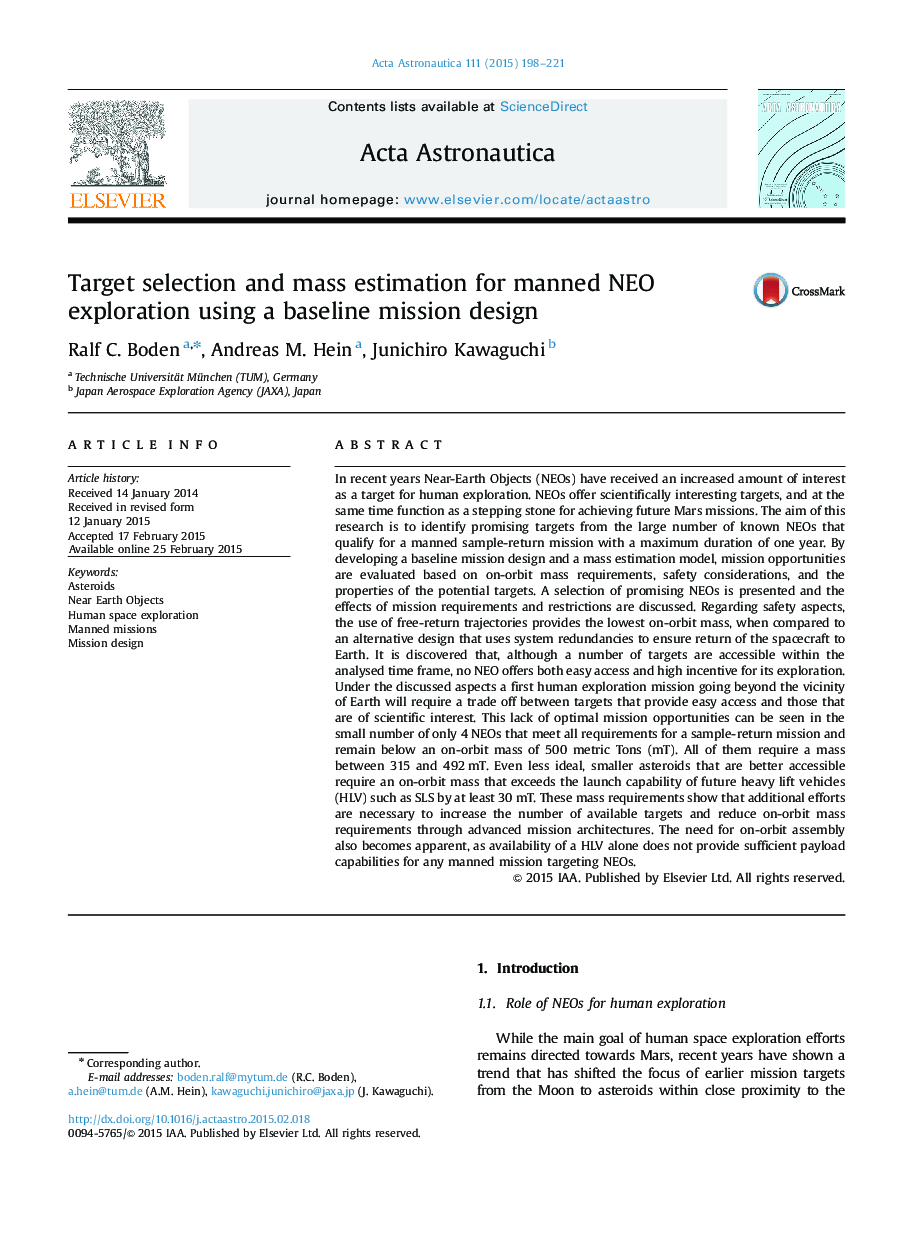| Article ID | Journal | Published Year | Pages | File Type |
|---|---|---|---|---|
| 1714379 | Acta Astronautica | 2015 | 24 Pages |
•A generic mass model is developed to estimate on-orbit mass for manned NEO missions.•Safety considerations for crew-return and radiation shielding are added to the design.•Despite the NEO population׳s size no optimal target for sample-return is identified.•The best opportunities have a duration around one year and short stays at the NEO.•Mass requirements exceed the capability of any existing or planned launch-vehicle.
In recent years Near-Earth Objects (NEOs) have received an increased amount of interest as a target for human exploration. NEOs offer scientifically interesting targets, and at the same time function as a stepping stone for achieving future Mars missions. The aim of this research is to identify promising targets from the large number of known NEOs that qualify for a manned sample-return mission with a maximum duration of one year. By developing a baseline mission design and a mass estimation model, mission opportunities are evaluated based on on-orbit mass requirements, safety considerations, and the properties of the potential targets. A selection of promising NEOs is presented and the effects of mission requirements and restrictions are discussed. Regarding safety aspects, the use of free-return trajectories provides the lowest on-orbit mass, when compared to an alternative design that uses system redundancies to ensure return of the spacecraft to Earth. It is discovered that, although a number of targets are accessible within the analysed time frame, no NEO offers both easy access and high incentive for its exploration. Under the discussed aspects a first human exploration mission going beyond the vicinity of Earth will require a trade off between targets that provide easy access and those that are of scientific interest. This lack of optimal mission opportunities can be seen in the small number of only 4 NEOs that meet all requirements for a sample-return mission and remain below an on-orbit mass of 500 metric Tons (mT). All of them require a mass between 315 and 492 mT. Even less ideal, smaller asteroids that are better accessible require an on-orbit mass that exceeds the launch capability of future heavy lift vehicles (HLV) such as SLS by at least 30 mT. These mass requirements show that additional efforts are necessary to increase the number of available targets and reduce on-orbit mass requirements through advanced mission architectures. The need for on-orbit assembly also becomes apparent, as availability of a HLV alone does not provide sufficient payload capabilities for any manned mission targeting NEOs.
